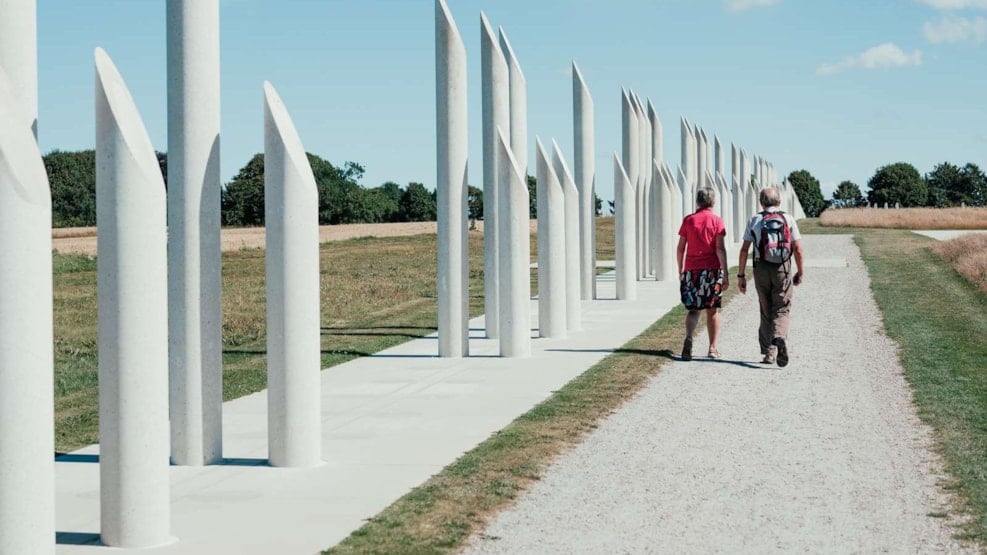
An Outline for the Vikings
The tour, an Outline for Life of the Viking Kings, takes you past a demonstration of power of immense proportions—one we can hardly fully comprehend.
Monuments of Gigantic Character
The monument cost tens of thousands of man-hours but was only in use for a few years. Harald also had the Ravning Bridge built, which at the time was Northern Europe's longest bridge, and he erected ring fortresses scattered across the country. However, these constructions were not allowed to stand for long. The enormous palisade surrounding the monument site was burned down before the year 1000. The Ravning Bridge was never repaired, and the ring fortresses were abandoned shortly after Harald Bluetooth's death in 986/987.
It may seem like a tremendous waste of blood, sweat, and tears. To find meaning, we must look to the great political scene in Europe during the latter half of the 900s.
The Great Neighbor to the South
Just south of Denmark's stronghold, Dannevirke, and the trading town of Hedeby, the German Emperor Otto 1. held power in an empire that stretched from the Danish border in the north all the way down south of Rome. In 962, the Pope declared him Emperor of the Holy Roman Empire of the German Nation. Thereafter, Otto earned the nickname "the Savior" as he, with the Pope's blessing, Christianized large parts of Europe that had not yet been converted, often using force.
Harald's father, Gorm the Old, stubbornly rejected overtures from the continent. But Harald saw the political, military, and religious pressure rising from outside, and to withstand the violent forces, he introduced significant changes in Danish society. These included both a centralization of power and a voluntary transition to Christianity.
By Christianizing Denmark, Harald removed Otto's excuse for invading the country. At the same time, trade with the continent became easier. With the Church's help, the country was much better organized.
A Prestige Project of Great Dimensions
The monument site in Jelling is a record-breaking place. It is the largest construction we know of from the Viking Age and contains both the world's largest runestone and the largest ship setting. Yet, the site has no military significance. It is a prestige project meant to showcase the king's power. Here, Harald framed his achievements in a symbolism of power where mathematics and geometry bear the marks of Christian thought. Jelling became the place where Harald displayed his might.
The short lifespan of Harald's constructions is likely due to significant changes in the political situation in Europe during the 980s. The Holy Roman Empire lost its momentum. At the same time, Harald's son, Sven Forkbeard, strengthened his position of power and stood up against his father in a conflict that cost Harald his life.
A Dominant Position in Europe
The weakened threat from the south freed up forces that could be deployed elsewhere. Sven focused his attention on the other Nordic countries and, not least, England. This development diminished the military significance of the ring fortresses, while Harald's symbolic constructions around the monument site were burned down, possibly to erase the memory of Harald.
Harald's grand plans held water as long as he was alive. But the constructions were destroyed or neglected and faded from memory. However, Harald Bluetooth's efforts were so significant that he transformed the political landscape throughout Europe. Denmark transitioned from being a lawless outlying region to a Christian kingdom and a part of the European community. Along with Sven Forkbeard's expansionist zeal and Cnut the Great's political skills, the kingdom's power grew to a dominant position in Europe. In just three generations, the Danish kings influenced the great political development for several hundred years to come.